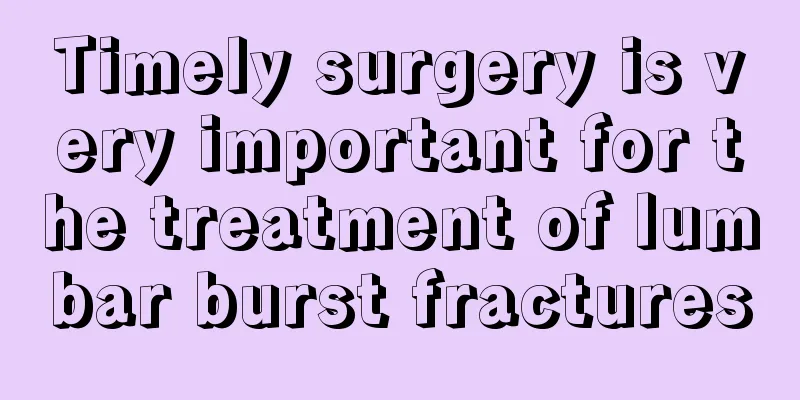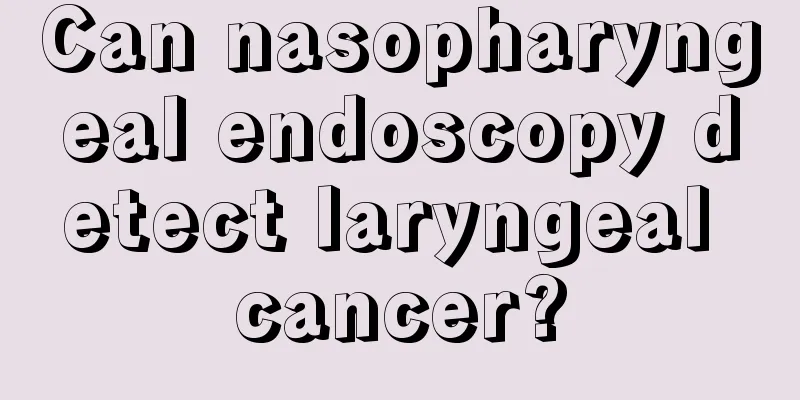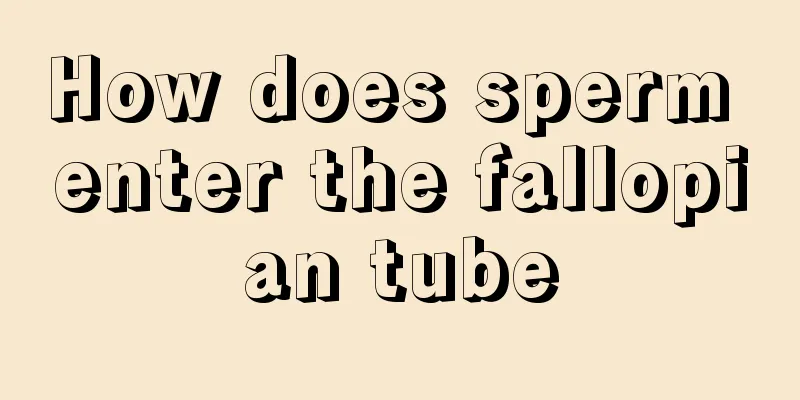Timely surgery is very important for the treatment of lumbar burst fractures

|
Lumbar burst fractures are mostly caused by external violence. Patients will experience local pain and will be limited in turning over and standing up. If it is a simple fracture, it can be treated conservatively. If the fracture is serious and requires surgery, tension should be eliminated before the operation and good care should be taken after the operation. 1. Treatment methods 1. Conservative treatment It is suitable for simple compression fractures with height >50%, simple spinous process or transverse process fractures, and stable fractures without nerve damage. 2. Surgery The goal is to relieve spinal nerve compression, correct deformities, and restore spinal stability. It is suitable for unstable spinal fractures, vertebral compression exceeding 1/2 and deformity angle greater than 20°. The methods include posterior pedicle screw fixation technique, anterior transabdominal surgery, and spinal nerve decompression surgery. In recent years, some scholars have also adopted percutaneous minimally invasive surgery. 2. Nursing 1. Preoperative care 1. First aid and transportation: First straighten the injured person's lower limbs and upper limbs and place them at the sides. Three people hold the patient's torso, roll it as a whole, and move it to the wooden board. Or three people use their hands to simultaneously lift the patient flat on the board. It is forbidden to hug or use the method of one person lifting the head while the other lifts the feet, so as to avoid increasing the curvature of the spine and aggravating the injury to the vertebrae and spinal cord. 2. Psychological care Lumbar fracture causes partial or complete loss of the weight-bearing function of the human trunk, and the course of the disease is long. Combined with nerve damage, it may cause incomplete or even complete paralysis of the lower limbs, causing tremendous psychological pressure on the patients. Nurses should promptly and comprehensively understand the patient's injuries, strengthen communication with the patient, and provide targeted psychological counseling. The fracture healing process, the significance of functional exercise, and the purpose of surgical treatment can be explained clearly to the patient in plain language to eliminate tension, enhance confidence in recovery, mobilize the patient's subjective initiative, and strive for active cooperation. 3. Practice deep breathing. After lumbar fracture, retroperitoneal hematoma, fracture pain, etc. will affect the patient's respiratory function. Therefore, patients should be encouraged to do deep breathing exercises before surgery, especially older patients, to prevent postoperative lung complications. (II) Postoperative Care 1. Vital signs monitoring. 2. Observation of spinal nerve function. 3. Incision drainage tube care: 1-2 negative pressure drainage tubes are placed on the patient's incision. The incision should be closely observed for redness, swelling, exudation, bleeding, etc., and the skin tension around the incision should be checked for increased tension. If increased tension is found, the doctor should be notified and dehydration and swelling treatment should be given. Maintain effective negative pressure drainage to prevent tube blockage and retrograde infection. Record the drainage volume, color and properties. If the bloody drainage fluid is >100 ml per hour for 3 consecutive hours, it indicates possible bleeding and you should report to the doctor immediately. If the drainage fluid is light bloody or meat-washing water-like in color and exceeds 500 ml in 24 hours, cerebrospinal fluid leakage should be considered. 4. Diet care: Start drinking liquid food with water 6 hours after posterior approach surgery. If there is no discomfort, start drinking semi-liquid food after 12 hours, and eat normal food after 2 days. Anterior approach surgery requires fasting and intravenous nutritional support. After the anus is exhausted, liquid, semi-liquid, and normal food can be gradually introduced. Encourage patients to eat light, easily digestible, fiber-rich foods and fruits, and eat small, frequent meals. Avoid foods that cause intestinal gas, such as milk, soy milk, etc. |
<<: I have a stomachache from coughing, this can relieve the pain
>>: Conservative treatment for lumbar spondylolisthesis, mild conservative treatment is good
Recommend
How to treat left ovarian teratoma?
The best treatment for left ovarian teratoma is s...
Young atrophic gastritis
Gastric disease is a relatively common disease, a...
What should lung cancer patients pay attention to in their diet? Dietary conditioning methods for lung cancer
Lung cancer is a common disease. This disease is ...
Is there hope for a cure for stage III small cell lung cancer?
Is there hope for a cure for stage III small cell...
Can running every morning help you lose weight?
Nowadays, there are more and more obese people, a...
Why does pharyngitis occur during sleep
Pharyngitis is a common throat disease for many p...
Can hot food be put in the refrigerator?
Refrigerators are very popular nowadays. They pro...
How to keep your mouth clean
A high-quality life means paying attention to eve...
Why are my hands weak? I have these diseases
Everything you do in life requires the use of you...
How to make homemade chive sauce
Chive flower sauce is a nutritious and delicious ...
What is the reason for a sour mouth? It is usually caused by stomach problems
If you suffer from chronic pharyngitis or have pr...
Learn the correct way and time to brush your teeth
Everyone knows how to brush their teeth, but are ...
Natural way to dye grey hair black
There are many reasons for the appearance of gray...
What is the pathology of lupus nephritis
What everyone should know is that even the same d...
What are the guidelines for the diagnosis and treatment of nasopharyngeal carcinoma and how to diagnose and treat it
Nasopharyngeal carcinoma is one of the malignant ...









